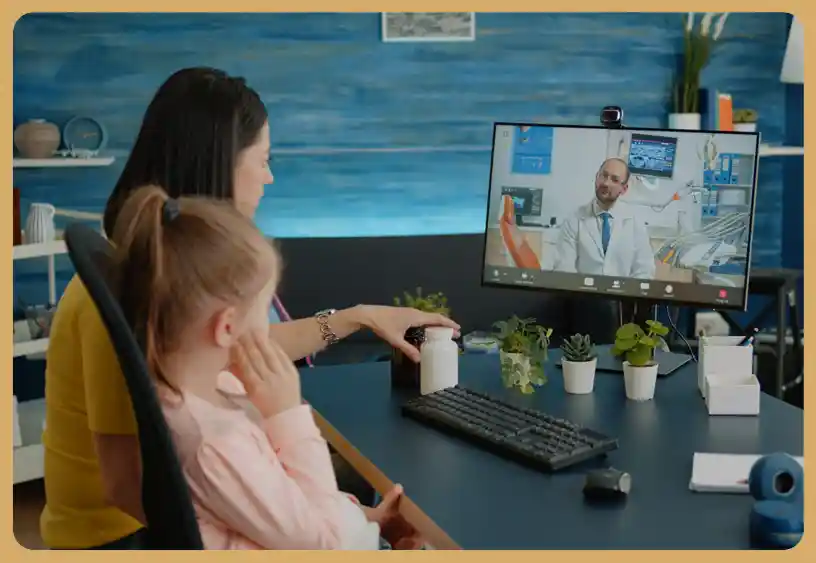
We all worry about things in our lives. But there are times when worrying gets the best of us and we do not get an opportunity to truly appreciate the life we live in. On the other hand, some amount of worrying is actually good for us as well. So how do we understand whether our worrying is healthy or not? Let us start from the basics, shall we?
What Exactly Do We Mean By Uncertainty?
Daily uncertainty implies we don't know what will happen or how things will end out. This is because the world is complex and we don't understand it. It impacts our personal relationships, occupations, and even transportation. This type of skepticism makes people uncomfortable and terrified because they seek stability and control. However, skepticism may lead to development and transformation. It encourages us to be tough and adaptive, which inspires innovation and fresh solutions in ambiguous situations. Accepting uncertainty as part of life may help people become more thoughtful and adaptable, reducing its negative impacts and making personal progress and happiness more joyful.
What Is Healthy Worrying?
Healthy thinking includes numerous methods to handle life's uncertainties. The first step is to acknowledge that fears and concerns are natural and often essential responses to potential issues or threats. Healthy worryers are more inclined to address their anxieties rather than ignore or avoid them.
Knowing the distinction between true and irrational anxieties is part of healthy thinking. It requires a clear-headed assessment of a situation's potential outcomes to determine if the anxiety is justified. This lets individuals concentrate on genuine issues rather than imaginary ones that stress and worry them. Healthy thinking also involves reducing risks. Instead of dwelling on the worst-case possibilities, people solve issues and make actions to address their worries. This might include seeking knowledge, seeking support, or finding strategies to manage stress and uncertainty.
But healthy worrying is putting things in perspective and being strong when things go wrong. It recognizes that anxieties should be noticed and addressed, but not let them take over your life. Be positive and confident in your problem-solving skills to achieve this. You must also accept uncertainty as natural. Good thinking involves identifying your anxieties and keeping calm and powerful. It equips people to handle life's unknowns with a balanced outlook, improving their mental health and coping skills.
How Can We Deal With Uncertainty Using Healthy Worrying?
Dealing with uncertainty using healthy worrying involves several strategies aimed at maintaining a balanced perspective and proactive approach. Here are some ways to effectively manage uncertainty:
Identify and prioritize concerns
Sort your anxieties and fears by significance. First, name your anxieties and fears when confused. Consider what's causing you stress, whether it's money, relationships, health, or anything else. Sort your problems by urgency and importance. This enables you focus on what matters most and avoids stress from having to handle all your issues at once. Grouping your issues helps you decide which ones require immediate attention and which can wait. Ranking worries helps you develop a plan of action, making it simpler to tackle them one at a time.
Practice mindfulness

Deep breathing, yoga, and meditation can help you overcome fear. These exercises increase awareness of the present, allowing you to observe your thoughts and feelings without judgment. You may separate yourself from your anxieties by mastering mindfulness. This will reduce mental confusion. Regular mindfulness exercise can also assist calm your nervous system and stay calm in uncertain situations. Awareness can also illuminate your anxieties' sources and tendencies. Self-awareness lets you handle uncertainty rationally rather than impulsively.
Seek information
The lack of information about a situation or problem sometimes leads to uncertainty. You should actively seek valuable information and solutions to address this. This might involve research, reading credible sources, or consulting specialists. More knowledge can help you comprehend your uncertainties and make better decisions. Looking for research might also dispel any myths that are making you uneasy. Checking sources and considering multiple perspectives is ideal when approaching this procedure with an open mind and critical eye. Learning more can help you feel in control and reduce confusion.
Focus on what you can control
Focus on the things you can change. It's normal to feel useless or weak when you don't know what will happen. It is important to remember, though, that there are some things you can change about the situation. Instead of focusing on the things you can't change, think about the things you can and take action to improve those areas. This could mean making action plans, having goals that are attainable, or using problem-solving techniques. Focusing your energy on steps you can take gives you back a sense of control and strength, which can help ease worry and uncertainty. Focusing on what you can change and make progress also helps you make progress and bring about good change, even when things are unclear. Always keep in mind that small, regular actions can add up to big changes over time.
Challenge catastrophic thinking
Uncertainty can make you think negatively, like by picturing the worst-case scenarios or catastrophizing. Cognitive reframing methods can help you challenge and rethink these negative thoughts to fight this tendency. When you notice that you are thinking negatively, take a moment to think about the information that supports your views. Think about whether there are other ways of looking at things or more fair points of view that you haven't thought of. You can feel more in control of your mind and less affected by negative thoughts if you reframe them in a more realistic and helpful way. Realizing that it takes time and practice to change deeply rooted thought habits is an important part of this process. Be kind and compassionate to yourself. You can create a more positive and strong attitude that makes it easier to deal with uncertainty if you are patient and persistent.
Develop resilience
Build resilience. Being resilient implies adapting and recovering from setbacks. It is essential for managing uncertainty. Create techniques to handle challenges and adapt to harsh situations to become more resilient. This might entail exercising, eating healthily, and getting enough sleep to maintain your physical and emotional health. Build social support networks with family, friends, or support groups to gain support and encouragement during trying times. A growth mindset and problem-solving skills might help you be more resilient by seeing issues as opportunities to learn and grow. Remember that resilience is about acquiring the tools and abilities to handle uncertainty, not avoiding it. Develop your resilience to gain inner strength, confidence, and fortitude to tackle uncertainty.
The Art Of Keeping Calm

We live in a world filled with uncertainty. There is no guarantee of what will happen next. But this doesn't mean that we have to live in absolute uncertainty. The key is in identifying the areas where you can bring in change and then letting go of things outside your control. If you feel like you need help sorting things out, remember that Zivanza is here to help you.
- Share














